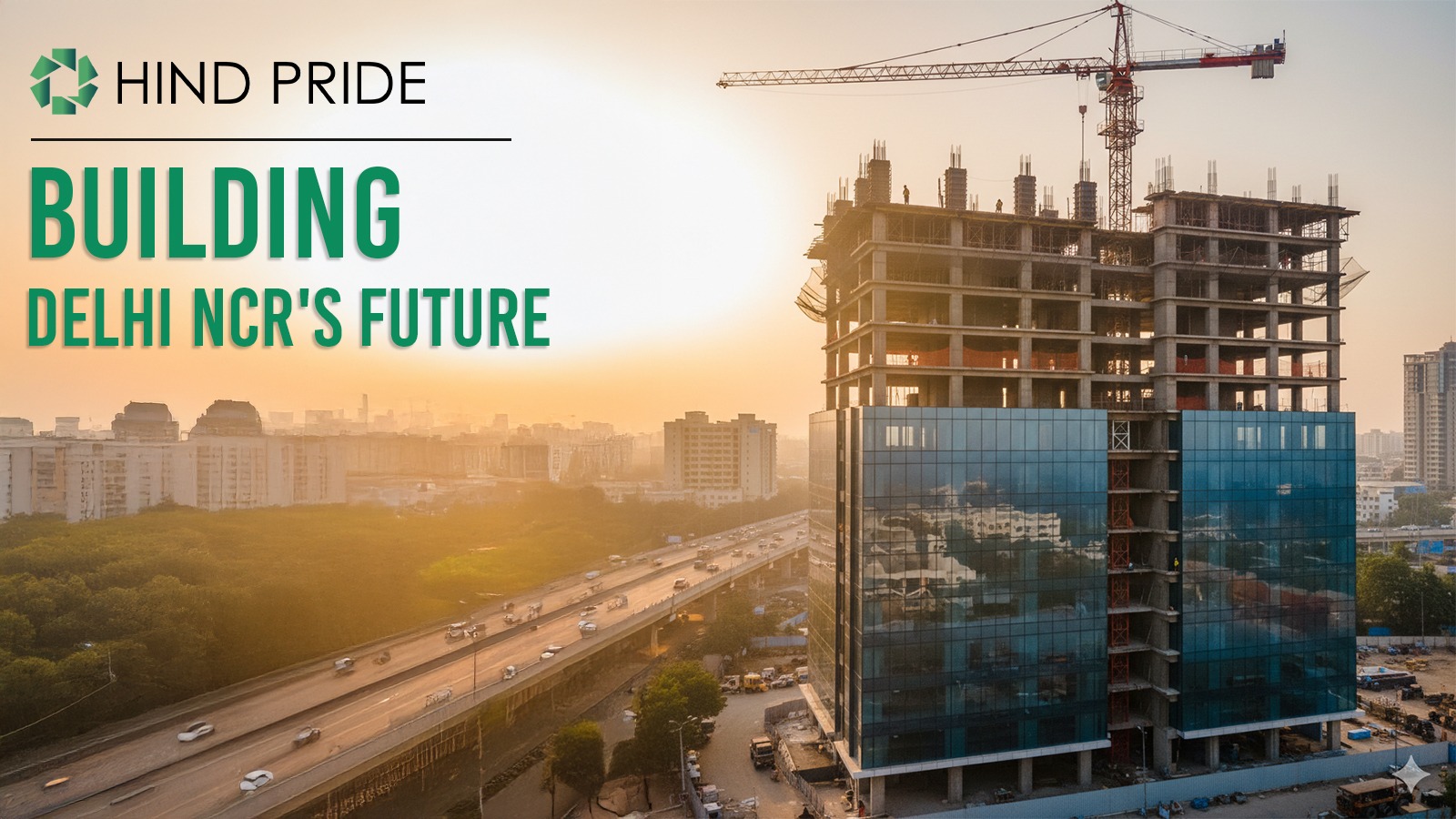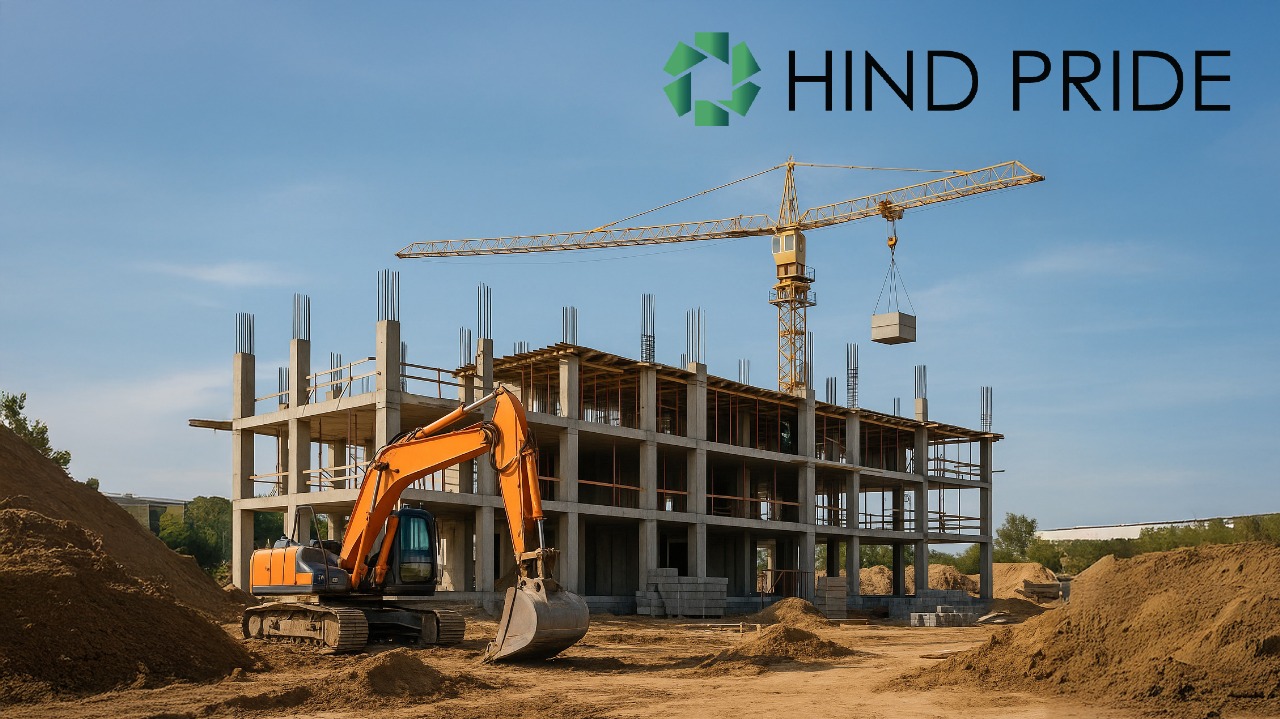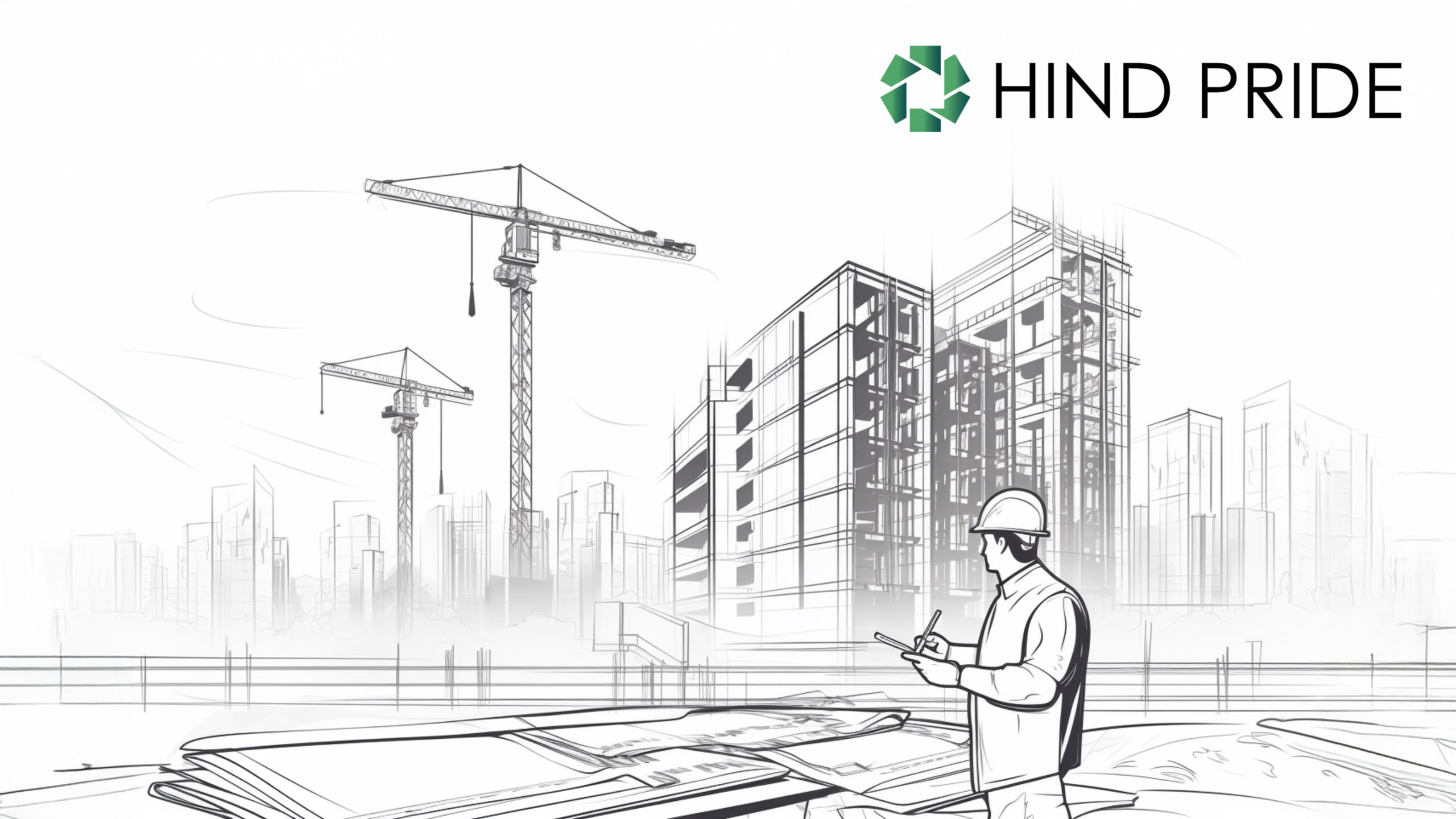

Table of Contents
ToggleWhen Paytm needed their 3.5 lakh sq ft campus in Noida, they didn’t just need a contractor—they needed a partner who understood that delays cost crores, compliance nightmares destroy reputations, and mediocre quality loses tenants.
When searching for a commercial construction company in Delhi NCR, business owners face a critical decision: they need what every smart business needs: a commercial construction company in Delhi NCR that delivers on three non-negotiables—sustainability, transparency, and zero surprises.
If you’re reading this, chances are you’re either planning your first commercial project or recovering from a contractor horror story. Either way, you’re in the right place.
📚 Want the complete deep-dive? Keep scrolling (20-minute read)
Here’s everything you need to know before signing that agreement.
Think of Delhi NCR as India’s business heartbeat. Every Metro line extension, every new expressway, every policy shift ripples through the commercial real estate market like dominoes.
According to CBRE’s India Market Monitor Q4 2024, NCR absorbed 12.7 million square feet of office space in 2024 alone. That’s roughly 250 Qutub Minars laid flat—except these monuments generate ROI instead of tourist selfies.
Key Statistics from Industry Reports:
What This Means for You: NCR isn’t just growing—it’s maturing. Tenants demand smart buildings, sustainability certifications, and world-class amenities. Choose a builder stuck in the 2010s, and you’ll struggle to lease your asset in the 2030s.

Understanding where your investment goes: Commercial construction cost distribution in Delhi NCR. Civil structure accounts for 42.5%, followed by MEP systems (22.5%), interiors (16.5%), smart building technology (10%), fire safety (7%), and other components (6%). Based on Hindpride’s analysis of 500+ NCR projects.
Choosing the right commercial construction company in Delhi NCR means understanding these cost layers. Let’s talk money—because most cost discussions online are either outdated or deliberately vague.
Commercial construction isn’t one number. It’s a matter of layers of costs, and understanding construction cost components prevents nasty surprises at handover.
| Cost Component | Range (₹/sq ft) | Why It Matters |
|---|---|---|
| Civil Structure (RCC, Steel, Façade) | 1,200 – 1,800 | Your building’s skeleton. Steel prices have surged 15% since 2023, per Indian Steel Association data |
| MEP Systems (Mechanical, Electrical, Plumbing) | 600 – 1,200 | HVAC, power, water—25-30% of total cost. Energy-efficient systems save 30-40% on operational costs (BEE India) |
| Fire & Safety Systems | 200 – 400 | Mandatory NBC 2016 compliance isn’t optional—it’s legal armour |
| Smart Building Tech | 300 – 700 | IoT sensors, BMS, automation. Smart buildings reduce energy consumption by 25% (IBM Research) |
| Interiors & Fitouts | 400 – 1,000 | Modular designs, furniture, and false ceilings determine tenant appeal |
| Compliance & Approvals | 50 – 150 | Authority fees, permits, and IGBC certification costs |
| Landscaping & External Works | 150 – 300 | Parking, gardens, lighting, rainwater harvesting |
Real-World Example:
For a 50,000 sq ft corporate office in Gurugram’s Golf Course Road:
Why the range? Location, finishes, and sustainability targets. A Sector 62 Noida office costs 15-20% less than comparable space in Cyber City, Gurugram.
Any reputable commercial construction company in Delhi NCR must navigate the following. Here’s where 60% of commercial projects stumble: regulatory compliance.
In NCR, you’re not just dealing with one authority—you’re juggling municipal corporations, pollution control boards, fire departments, and sometimes environmental clearance committees.
1. FAR (Floor Area Ratio) Norms
2. Fire & Safety Compliance
3. Environmental Clearances
4. Labour & Safety Laws
5. Accessibility Standards
Horror Story Warning: We’ve seen ₹50 crore projects get stop-work orders because builders skipped ₹5 lakh worth of environmental clearances. Don’t be that statistic.
Pro Tip: At Hindpride, our in-house legal and approvals team handles documentation across all NCR municipalities—from Gurugram’s MCG to Noida Authority to Delhi DDA. Zero client stress, 100% compliance.
Not all builders are created equal. Some build offices. Some build headaches.
Here’s your 7-point filter:
Don’t hire a residential specialist for your 200,000-square-foot office tower. Demand:
Internal Resource: Explore Hindpride’s Commercial Projects Portfolio, featuring over 500 completed spaces.
By 2030, 70% of NCR’s office demand will be green-certified (USGBC projection). Choose builders with:
Sustainability isn’t feel-good marketing—it’s ROI. Green buildings command rental premiums of 15-20% (World Green Building Council).

Red flags include:
What to Demand:
The best commercial construction companies in Delhi NCR have:
Why This Matters: Outsourcing everything = coordination nightmares and finger-pointing when things go wrong.
Ask if they use:
Companies still relying on 2D blueprints and Excel sheets? Run.
Related Read: Best Construction Company in India 2025
According to Knight Frank’s Construction Delay Analysis, 47% of NCR commercial projects are expected to face delays of 6-12 months.
Questions to Ask:
The relationship doesn’t end at possession. Demand:
Remember when everyone said “fast, good, cheap—pick two”? Modular construction is rewriting that rule.
Think LEGO blocks, but for buildings. Components are:
Time Savings: 20-30% faster than traditional construction (Modular Building Institute)
Quality Control: Factory conditions mean:
Cost Efficiency: Lower labour costs, reduced site accidents, faster ROI realisation
Sustainability: Less on-site waste, lower carbon footprint, recyclable materials
Real Example: Our Noida Institutional Campus project utilised modular hostel blocks, which were delivered 4 months ahead of schedule with a 20% cost savings.
External Authority: McKinsey’s Modular Construction Report projects a 20% CAGR in adoption by 2030.
Let’s bust a myth: “Green buildings are expensive luxuries.”
Reality: They’re 5-10% costlier upfront but deliver 25-35% lower operating costs over 10 years.
Financial Benefits:
Regulatory Advantage:
Tenant Demand: According to JLL’s Future of Work Report, 78% of corporate tenants now mandate sustainability certifications in their real estate policies.
Key Certifications to Target:
Hindpride’s Green Track Record: 100% of our commercial projects since 2019 have achieved minimum LEED Silver certification. We’ve planted over 10,000 trees across our project sites, maintaining our “Zero Tree-Cutting” pledge.
Buckle up—the next 5 years will make the last decade look quaint.
India’s commitment to net-zero by 2070 means commercial buildings must drastically cut carbon emissions. Expect:
Tech to Watch: Low-carbon cement alternatives (LC3 cement) reduce embodied carbon by 30-40%
Future offices will:
Market Projection: Gartner predicts 50% of new commercial buildings will have AI-driven BMS by 2028.
The 9-to-5 office is dead. Long live the:
Data Point: CBRE’s Hybrid Work Survey shows 62% of companies want 30-40% less fixed desk space but MORE collaboration areas.
New commercial hubs along:
These will feature:
Investment Opportunity: According to Anarock Property Consultants, these corridors are expected to attract ₹2 lakh crore in investment by 2030.
Say goodbye to “demolish and dump.” Future construction will:
Why This Matters: Research by the World Economic Forum shows that circular construction can reduce global CO2 emissions by 38% by 2050.
Learn from others’ ₹crore mistakes:
The Trap: “₹2200/sq ft! That’s ₹300 cheaper than everyone else!”
The Reality: You’ll pay through hidden costs, substandard materials, or incomplete work.
The Fix: Evaluate bids on:
Rule of Thumb: If a bid is >15% below market average, there’s a skeleton in the blueprint closet.
The Trap: “We can save ₹2 lakhs by skipping the geotechnical survey.”
The Reality: Foundation cracks, structural settling, or catastrophic failures costing ₹crores.
The Fix: ALWAYS conduct:
Delhi NCR Reality: Parts of Noida have high water tables; parts of Gurugram sit on weak soil strata. One-size-fits-all foundations don’t work here.
The Trap: “We trust our contractor. No need for harsh clauses.”
The Reality: Delays become “unavoidable circumstances.” You lose ₹15 lakhs/month in expected rental income.
The Fix: Contract must include:
The Trap: “We’ll handle fire NOC later. Let’s just complete construction.”
The Reality: You can’t get occupancy certificate without fire clearance. Building sits empty while you scramble for retrofits.
The Fix: Integrate fire safety from DAY ONE:
Did You Know? Fire insurance premiums are 30-40% lower for NBC-compliant buildings.
The Trap: “Green certification is expensive and unnecessary.”
The Reality: In 2025, non-certified buildings face:
The Fix: Minimum LEED Silver or IGBC Gold should be the baseline target for any commercial project in NCR.
The Trap: “We’ll figure out payments as we go.”
The Reality: Construction gets halted mid-way due to fund crunches. Contractors walk off site.
The Fix:
Financing Options:
The Trap: “The Construction is done. We’re done with the builder.”
The Reality: HVAC systems fail, waterproofing issues emerge, and elevators need servicing.
The Fix: Negotiate:
Hindpride’s Commitment: We offer 365-day post-delivery support for all commercial projects. Because our relationship doesn’t end at the ribbon-cutting ceremony.
Before signing that ₹100+ crore agreement, tick these boxes:
Pro Tip: Use a third-party chartered civil engineer to review contracts before signing. ₹50,000 spent here saves ₹50 lakhs later.
Every construction company claims to be “the best.” We prefer to let our work speak.
18+ Years of Proven Track Record
Not 18 years of “experience”—18 years of delivered projects. There’s a difference.
500+ Completed Projects
From 5,000 sq ft boutique offices to 250,000 sq ft corporate campuses. We’ve seen every challenge NCR can throw at us.
Zero Tree-Cutting Policy
We’ve completed every project without cutting a single tree. It’s not a marketing gimmick—it’s our environmental commitment verified by third-party audits.
100% Green-Certified Commercial Portfolio (Since 2019)
Every office project achieves minimum LEED Silver. Most hit Gold or Platinum.
Transparent Billing
Itemized costs. No hidden charges. Escrow-friendly payment structures.
In-House Technical Excellence
Technology-First Approach
Post-Delivery Care
365-day support. AMC options. Emergency response. We’re partners, not just contractors.
“In 25 years of real estate development, I’ve worked with 40+ contractors. Hindpride is the only one I’d rehire without interviewing others.”
— CEO, [Leading Real Estate Group]
“They delivered our Gurugram office 3 weeks early. I’m still in shock.”
— CFO, [Tech Unicorn]
“The post-handover support is unmatched. They act like it’s still their project.”
— VP Operations, [Manufacturing Conglomerate]
See Our Complete Portfolio: Hindpride Commercial Projects
Basic: ₹2,500-3,500/sq ft | Mid-Range: ₹3,500-4,500/sq ft | Premium: ₹5,000-6,500/sq ft
Location matters: Gurugram costs 15-20% more than Noida. Green certifications and smart tech add a 10-15% premium. Partnering with the right commercial construction company in Delhi NCR isn’t just about cost,its about the location as well.
Timeline killers: Approvals (6-9 months), monsoons, material delays. Tip: Modular construction cuts time by 20-30%.
All projects: Building plan, FAR sanction, Fire NOC, structural certificate, labour registration
Projects >20,000 sq m: Environmental clearance, tree preservation, traffic assessment
High-rises (>24m): Aviation clearance, earthquake-resistant design
Hindpride’s in-house team handles end-to-end approvals.
Short answer: Yes. Payback in 3-5 years.
Math: 5-10% higher upfront, but delivers:
Plus: Attracts blue-chip tenants, ESG compliance, happier employees.
Four advantages:
Real example: We completed a 120,000 sq ft Noida campus 6 months early, saving client ₹2.4 crore.
Yes. Path: Solar panels (40-60% generation), energy-efficient systems (30-40% reduction), low-carbon materials, carbon offsets.
NCR examples: ITC Green Centre (Gurugram), Indira Paryavaran Bhawan (Delhi)
By 2030, carbon accounting will be mandatory for commercial buildings.
Green certification adds 15-20% to returns. NCR offices delivered 12-14% annualized returns over last decade (JLL India).
Must-do checks:
Red flags: No client contacts, 20%+ price undercutting, pressure to sign fast.
Established: Gurugram (Cyber City, Golf Course Road) – ₹80-120/sq ft rent
Emerging: Noida (Sector 62, Expressway), Dwarka Expressway – 15-20% appreciation potential
Future bets: Greater Noida West, Yamuna Expressway – 5-7 year horizon
Data: Anarock NCR Market Report
Solution: Hire builders with local expertise and dedicated approvals teams.
Integrated wins for standard commercial projects:
Exception: Ultra-specialized projects (data centers, hospitals) may need specialist contractors.
Already happening:
Coming soon: Autonomous equipment, robotic construction, generative design
Hindpride package: 12-year structural, 7-year waterproofing, 3-year MEP, 24-month defect liability.
Infrastructure:
Technology:
Regulatory: Build to standards 2-3 years ahead of mandates (net-zero by 2030-32).
Prevention:
If it happens:
Reality check: Established builders (15+ years, 500+ projects) don’t abandon—reputation > any single contract.
Beyond the ₹/sq ft quote, budget for these often-overlooked expenses:
What: External development charges, license fees, conversion charges
Cost: 3-7% of project value
Example: Gurugram’s EDC/LF can add ₹400-800/sq ft
What: 12% GST on construction, 18% on professional services
Cost: Don’t forget to factor this into your loan amount
What: Temporary structures, worker housing, security, utilities
Cost: ₹50-100/sq ft
What: LEED/IGBC fees, structural audits, fire safety audits
Cost: ₹8-15 lakhs for 50,000 sq ft building
What: Stamp duty, registration, legal vetting
Cost: 2-4% of project value (varies by state)
What: Soil surprises, material escalation, scope changes
Recommended Buffer: 12-15% of quoted cost
What: Loan processing fees, interest during construction
Cost: Factor in 18-24 months of interest at 9-11% (current construction loan rates from SBI, HDFC)
What: Marketing, leasing commissions, initial utilities
Cost: 6-8% of annual rental value
Reality Check: A project quoted at ₹10 crore construction cost typically needs ₹12.5-13.5 crore total investment including all hidden costs.
Hindpride’s Transparent Pricing: Our proposals include detailed line items for ALL costs—no surprises, no fine print. Request a detailed cost breakdown.
Getting a LEED plaque is nice. Actually reducing environmental impact is better. Here’s how:
The Problem: 40% of building’s lifetime carbon comes from materials and construction (World GBC data)
Solutions:
Target: Return more water to groundwater than consumed
How:
NCR Regulation: Haryana requires rainwater harvesting for plots >500 sq m; UP mandates it for >300 sq m
Beyond Boring Lawns:
Why This Matters: IGBC is now awarding extra points for biodiversity net-positive projects
Principle: Waste = Food
Application:
Often Forgotten:
Hindpride’s Sustainability Report: We publish annual ESG impact reports for all projects—carbon saved, water recharged, workers benefited. Transparency breeds accountability.
You’ve read 5000+ words. Now what?
✅ Define your project requirements clearly
✅ Set realistic budget (including 15% buffer)
✅ Identify 3-5 preferred locations
✅ Determine green certification targets
✅ Create feasibility timeline
✅ Shortlist 4-5 construction companies
✅ Visit completed projects of each
✅ Speak with past clients
✅ Verify legal/financial standing
✅ Review sample contracts
✅ Request detailed proposals
✅ Compare apples-to-apples (itemized costs)
✅ Evaluate green design approaches
✅ Assess technology adoption
✅ Review warranty terms
✅ Negotiate payment milestones
✅ Include penalty clauses
✅ Define scope crystal-clearly
✅ Set up escrow accounts
✅ Engage third-party project manager
✅ Attend monthly review meetings
✅ Verify milestone completion before payments
✅ Track against BIM model
✅ Conduct quarterly third-party audits
Don’t Go It Alone: Most clients hire a Project Management Consultant (PMC) for large projects. ₹10-15 lakhs spent on PMC can save ₹crores in overruns.
Every commercial building you create becomes part of NCR’s story.
Will it be another cookie-cutter concrete box that ages poorly and guzzles energy? Or will it be a workspace that:
The choice isn’t just about the builder you hire. It’s about the legacy you build.
At Hindpride, we’ve spent 18 years perfecting one thing: turning your commercial real estate vision into a high-performance asset that delivers for decades.
We don’t just build offices. We build competitive advantages.
Get Your Free Consultation:
📞 Call: 9099095581
📧 Email: design@hindpride.com
🌐 Website: https://hindpride.com
What You’ll Get in the Consultation:
✅ Site feasibility analysis
✅ Preliminary cost estimate
✅ Green certification roadmap
✅ Timeline projection
✅ Regulatory compliance checklist
No obligations. No sales pressure. Just honest expertise from people who’ve built 500+ projects.
Internal Links (Hindpride Blog):
External Authority Links:
Government & Regulatory:
Industry Research: 9. CBRE India Market Reports – Market Data
10. Knight Frank India Research – Office Market Trends
11. JLL India Insights – Investment Analysis
12. Anarock Property Consultants – NCR Market Intelligence
Green Building: 13. USGBC LEED Certification – Global Standard
14. Indian Green Building Council (IGBC) – National Ratings
15. GRIHA Rating System – Government-backed
16. World Green Building Council – Global Research
Construction Technology: 17. McKinsey Construction Insights – Industry Trends
18. Modular Building Institute – Modular Construction Research
19. Autodesk BIM Resources – Digital Construction
20. Institution of Engineers India – Professional Standards
Hindpride Construction Team has delivered 500+ projects across Delhi NCR since 2007, specialising in sustainable commercial and residential construction. Our mission: Build trust, not just buildings.
Lorem ipsum dolor sit amet, consectetur adipiscing elit. Ut elit tellus, luctus nec ullamcorper mattis, pulvinar dapibus leo.


